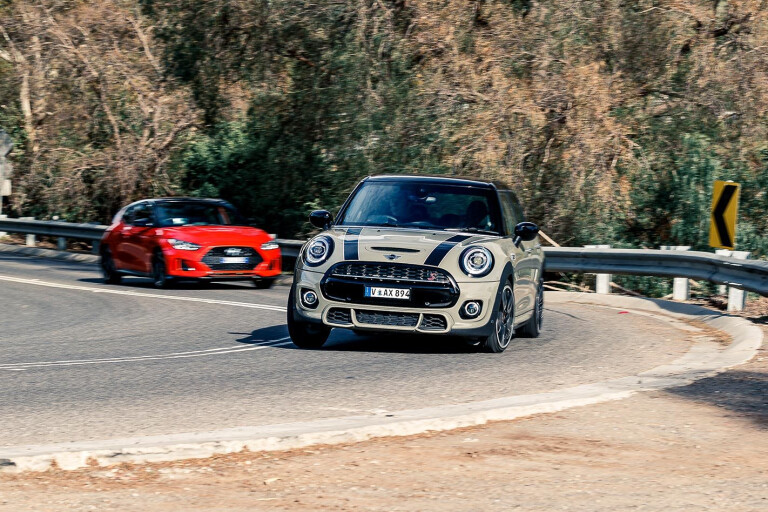
We’ve all been there. Trying to make a bad idea good is something most of us experience every day. It never starts out as a dumb idea, of course, but as we learn more, the seed of doubt is planted. From there, we create ever more tenuous justifications before finally admitting defeat. It’s tempting to think of the original Hyundai Veloster as that bad idea. It was a lukewarm front-drive coupe with two doors on one side and one on the other and, to be honest, was never a particularly great car.
Here’s the odd thing, though. As mundane as the Veloster’s execution sounds, it was hugely successful. Its biggest market was the US where it sold a total of 169,411 units between 2011 and 2017. By contrast, in the same market for an equivalent duration from launch, the Toyota 86 found 72,762 homes. Add the Subaru BRZ and Scion FR-S versions and the total creeps up to 106,580. The Mazda MX-5 shifted 51,854. Therefore, it goes without saying that in terms of cash through the front door, the second-generation Veloster has a lot to live up to.

Given the fact that Hyundai now has one of the best vehicle dynamics teams in the business, responsible for developing the impressive N-badged sports models, it’s fair to say that our expectations of this latest Veloster had been ratcheted up a bit. Not through the roof, though, as we don’t get the full-on Veloster N here in Oz given it’s left-hand drive only. That car has proven such a hit in the US that it walked away with Road & Track magazine’s prestigious 2020 Performance Car of the Year award, beating the likes of the BMW M2 Comp, Lamborghini Huracan Evo and Porsche 911 Carrera S. You can’t do that with mediocre underpinnings.
We’ve plucked the model that now sits at the top of the Veloster range, the $42,410 Turbo Premium, fitted with a seven-speed dual-clutch transmission and justifying its three grand premium over the regular Turbo with the addition of 18in machine finished alloy wheels, leather seats, rain-sensing wipers, a heated steering wheel, a wireless phone charging pad, a glass sunroof, heated and ventilated front seats and the option of a contrast colour roof.

There’s little doubt that in this Tangerine Comet paint finish and Phantom Black roof the Veloster looks striking, but is it really $12,370 more desirable than the mechanically identical i30 N-Line, which fronts up with the same 150kW/265Nm 1.6-litre turbo and DCT gearbox combo? That’s a tough one to wrap your head around.
There’s also the thorny issue of a rival, given that the Veloster operates in a class of one. Easing the belt buckle out a little in terms of definition, we settled on another style-driven choice, that’ll also appeal to those who fancy a sharp steer – the $45,250 Mini Cooper S five-door. Despite packing a bigger 2.0-litre engine, it’s down on the Veloster’s power output at 141kW, although it makes amends with 280Nm arriving at just 1250rpm. And that torque figure also steps up to 300Nm with a transient overboost facility. The Veloster’s 1.6T-GDi turbo lump does overboost to 275Nm, but you’ll need to be at 4500rpm to feel the full benefit. In short, cubes count when it comes to torque. Advantage Mini.
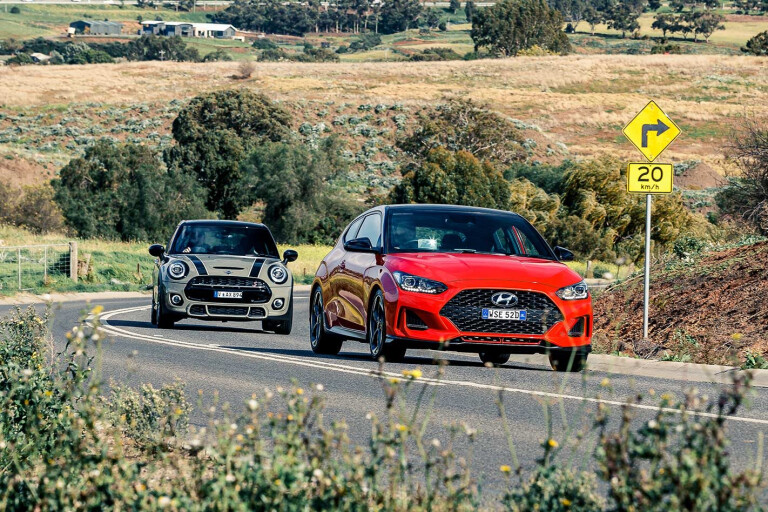
That instant impression of muscle translates to the feel as soon as you start the Cooper S. The engine note is surprisingly deep, the steering is ultra-alert and the throttle mapping in Sport mode makes the Mini feel immediate and vivacious. There’s heft in the steering, the brake pedal feels reassuringly punchy and despite its wheelbase being an extra 72mm longer than its three-door sibling, it retains that kart-like point and squirt ability.
The Hyundai feels a little more measured in its low-speed composure. The steering’s slower, but it feels accurate and more consistent in its weighting. The throttle is smooth in Normal mode, but there’s an unpleasant low-rev hunting in Sport, as if the calibration of the map is stepped in units of ten rather than single digits. There’s also an odd acoustic signature below 3000rpm, where the engine makes an almost electrical whine.
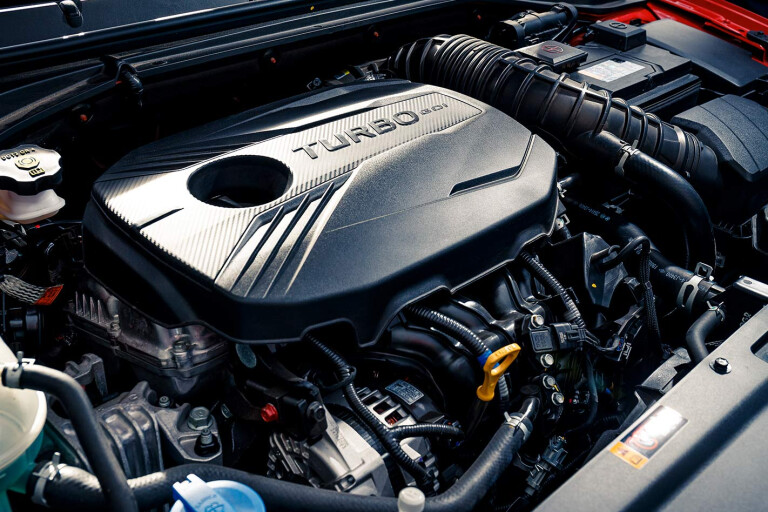
Find a decent road and the Mini’s early wins evaporate. The 205/40 R18 Pirelli Cinturato P7 tyre is in no way a match for the bigger and better 225/40 ZR18 Michelin Pilot Sport 4 on the Hyundai, and the Veloster offers a far crisper, grippier front end, which is exactly what you’re after in hottish front-wheel drive hatches. The Mini, by contrast, lapses disappointingly early into scrappy understeer, with inconsistent steering weighting doing it no favours mid-corner. In essence, the Cooper S feels the sharper car up to about six- or seven-tenths, after which the Hyundai’s chassis shows its colours. And they’re excellent.
Really lean into a corner and there’s bags of grip on offer, and only by pouring on everything the four-pot has got mid-corner can you elicit a sniff of torque steer. Understeer? At typical road speeds, it’s noticeable by its absence and even on challenging roads common sense usually intervenes well before the stability control does. Switch out the electronic guardians and the rear can be teased into mobility like a previous-gen Megane Renaultsport.
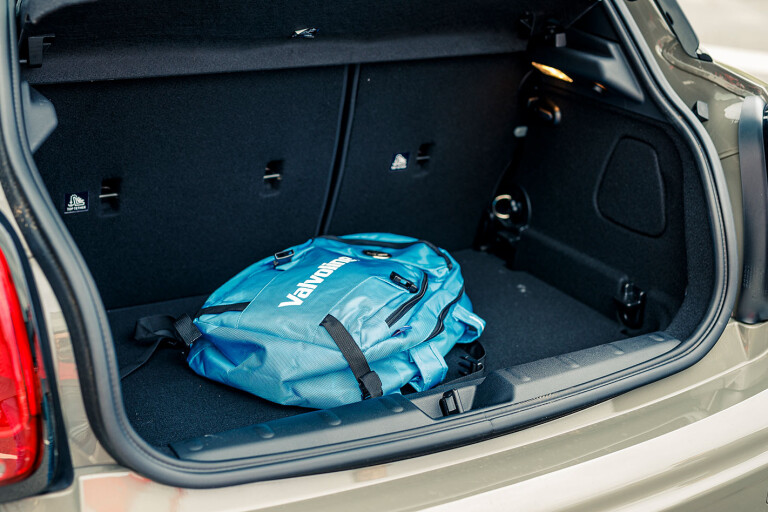
The brakes, which feel sharply overservoed at first, are enormously reassuringly when called upon to perform from high speed, momentary squeals from the front hoops letting you know how close to threshold the ABS is keeping things.
Tyre noise is the dominant sound when cruising, and the firmish suspension doesn’t transmit too much bump and thump into the cabin. It’s an easy car to drive by ear using the small plastic wheel-mounted paddles. There’s not much point revving it to over 6000rpm, but in the upper reaches there’s a delicious mechanical vibe through the brake pedal. It feels alive.
The Mini, thanks largely to its cheaper tyres, has something a little moribund about it when pushed. It’s a dogged understeerer that never particularly enjoys a throttle lift to tighten the line neatly. The brakes feel strong and the pedal is beautifully calibrated, with easy modulation. Mid-corner bumps can spur the ESC into some fairly clumsy stabs to keep things in shape, and the seven-speed dual-clutch transmission is a bit bossy, often taking over even when in manual mode if it feels you ought to perform an up or downshift. It’s a bit of a shame that a car that wears the Cooper badge and is laden with Cooper S Works options still feels superficial in its dynamics, but much could be fixed with the simple spec of more focused rubber.

Where the Cooper S scores a decisive victory over the Hyundai is in its interior execution. It feels like a $40K+ car, whereas the Veloster’s hard plastics and slow touchscreen feel a good deal cheaper. Neither the low-set passenger seat nor the seatbelt reel are height adjustable and shorter passengers won’t enjoy the way the Veloster’s belt chafes on their necks.
This is a boutique sector and Mini seems to understand this a whole lot better than Hyundai. In reality, the Hyundai’s controls and screens are easier to use than the Mini’s cluttered array of toggle switches, rotary dials and buttons, but the materials quality inside the Cooper S is leagues better.

Some of that is down to options spend, but the head-up display is better in the Mini, the Alcantara and technical materials of the JCW seats are beautifully done and the rear view camera system is far better resolved.
It’s better in the back of the Mini, too. Aside from the fact that you can access the rear seats from both sides of the vehicle, there’s more head- and legroom in the Mini, although the trailing edge of the rear sunroof in our test car couldn’t have been more inconveniently positioned. The Hyundai is a good deal more claustrophobic in the back, with a rising windowline, a low-mounted bench which only seats two compared to the Mini’s three, and – like the Mini – there are no air vents or USB ports.
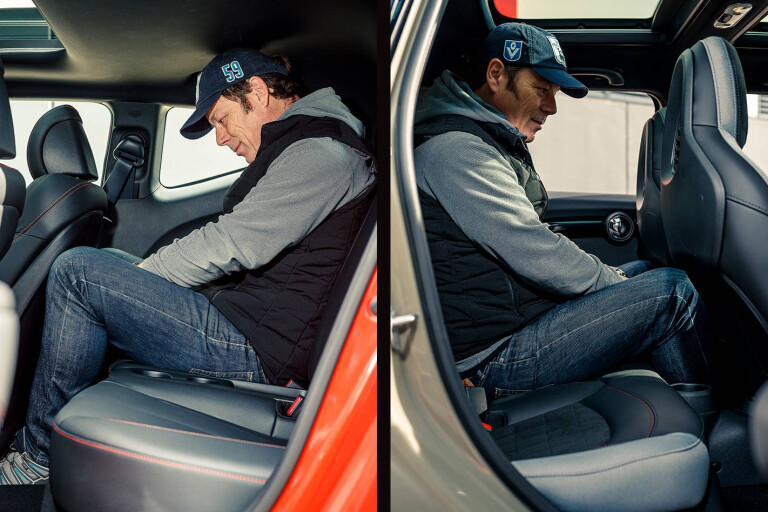
As a driver’s car, the Veloster is a revelation. It makes 150kW feel like all you’d ever need on the road to have fun. In that respect, it scores a decisive victory over the Mini. To this eye, it also looks a good deal more purposeful than the slightly ill-proportioned Brit.
But the Hyundai also feels as if it’s struggling to justify its price tag. For much the same price, you could buy the Hyundai i30 N, a car that’s superior in a whole host of regards. The Veloster will doubtless succeed, but this range-topper feels as if it has exhausted its brand equity somewhat at $42,410.
Mini, on the other hand, retains a laser-like focus on both the demands of its customers and, perhaps more crucially, their willingness to pay. They want a car that feels alive and cheeky in town, appears a genuinely chic, premium proposition inside, and has that feel-good factor of BMW’s badge behind it. That’s why it gets the win here, by the narrowest of margins. Ultimately, the quicker, more economical, more spacious, better-finished car squeaks the decision. But should you care to look past the Mini’s design-led artfulness, the Veloster has finally delivered the dynamic substance it so sorely lacked before.
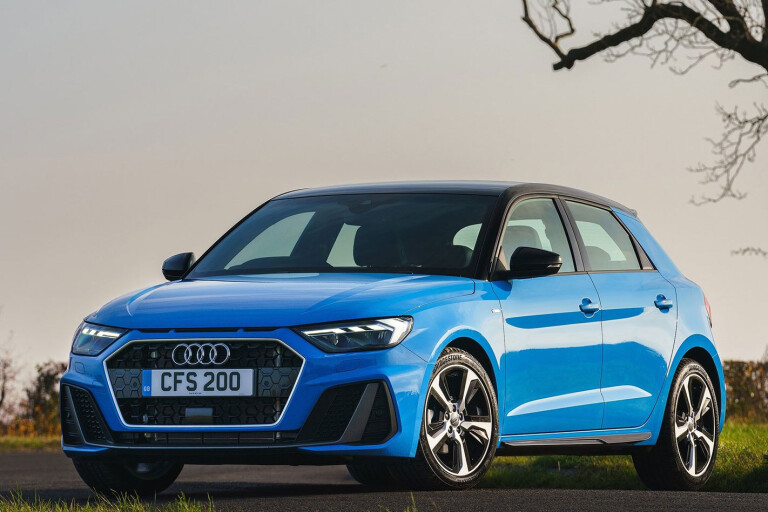
THE RIVAL: AUDI A1 40 TFSI ($46,450)
So you have around $45K burning a hole in your pocket and want something chic, a bit sharp to drive and which offers more than just a faint waft at practicality? Truth be told, the market’s not chockers with alternatives. Audi’s baby brawler, the A1 40 TFSI is one to consider, though. It sticks 147kW into a pared-back package with crisp styling, a 6.5-second 0-100 sprint, and a 335-litre boot. That’s better than the Veloster’s 303 litres or the Mini’s 278. Its three-year residuals of 61 percent are hard to ignore, too. By contrast the Mini retains 50 per cent and the Veloster 54 per cent.

MINI COOPER S 5-DOOR HATCH SPECS
Engine: 1998cc 4cyl, dohc, 16v, turbo
Max power: 141kW @ 5000rpm
Max torque: 280Nm @ 1250-4750rpm
Transmission: 7-speed dual-clutch
L/W/H/WB: 4005/1727/1425/2567mm
Weight: 1240kg
0-100km/h: 6.8sec (claimed)
Economy: 6.4L/100km
Price: $45,250
On sale: Now
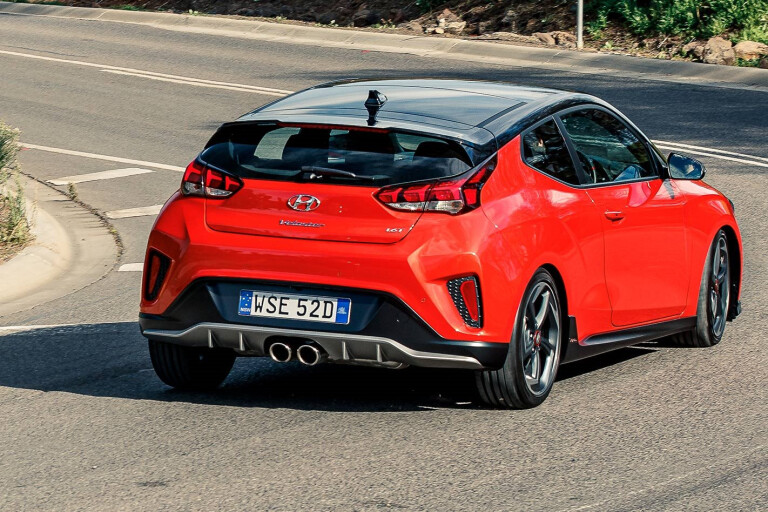
HYUNDAI VELOSTER TURBO PREMIUM SPECS
Engine: 1591cc 4cyl, dohc, 16v, turbo
Max power: 150kW @ 6000rpm
Max torque: 265Nm @ 1500-4500rpm
Transmission: 7-speed dual-clutch
L/W/H/WB: 4240/1800/1399/2650mm
Weight: 1350kg
0-100km/h: 7.1sec (claimed)
Economy: 6.9L/100km
Price: $42,410
On sale: Now



COMMENTS